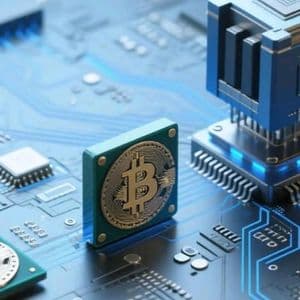Introduction Mining pools have been pivotal in shaping the cryptocurrency mining landscape since Bitcoin’s early 0 mining hardware evolved from CPUs to GPUs, then to ASICs, mining pools simultaneously adapted to these technological 1 article explores how mining machines and mining pools grew alongside each other and the evolution of the mainstream mining pool models that define today’s mining 2 CPU Mining to the Birth of Pools At Bitcoin’s inception in 2009, mining was done solo using conventional CPUs on personal 3 difficulty was low, enabling individuals to find blocks and earn Bitcoin independently. However, as more miners joined the network and difficulty increased, solo mining became impractical for 4 solution came in late 2010 with the formation of the first mining pools, such as Slush 5 allowed miners to combine computational power, reducing income variance by distributing rewards proportionally to contributed 6 innovation transformed mining from a lottery-like endeavor into a more predictable, steady income stream for 7 Evolution and Industrial Mining By 2010, GPUs replaced CPUs due to superior parallel processing power, leading to increased mining competitiveness and 8 pools expanded quickly, enabling more miners to join 9 briefly enhanced mining efficiency before being outpaced by 10 ASIC era, starting around 2013, dramatically increased mining speed and power 11 miners made individual mining with less specialized equipment nearly 12 pools scaled up their infrastructure, introducing sophisticated reward distribution mechanisms to accommodate a growing and diverse membership, thus becoming essential to mining operations 13 Formation of Mainstream Pool Models Mining pools developed various reward systems over time to balance risk, fairness, and income stability: Proportional Model: The earliest system paying miners proportionally based on shares within a mining round.
Pay-Per-Last-N-Shares (PPLNS): Rewards miners based on their most recent shares contributing to block discovery, introduced circa 2011 to reduce pool-hopping. Pay-Per-Share (PPS): A payout model pioneered by ViaBTC, introduced and launched in August 14 added transaction fees on top of PPS rewards, and was later adopted by many other mining 15 Pay-Per-Share (FPPS): Came later than PPS+, only appearing around 16 evolved from PPS to include both block rewards and transaction fees, providing miners with more stable 17 models aimed to reduce payment variance and risks, offering miners choices suited to their preferences for reward frequency and 18 Mining Pools and Their Services Today, mining pools manage millions of miners globally using advanced software that coordinates mining tasks and manages proportional payouts 19 charge competitive fees and provide transparency and 20 pools like ViaBTC offer flexible mining services and competitive reward systems, supporting miners from individuals to large-scale 21 Mining pools have evolved from simple collaborations in Bitcoin’s early CPU mining days to sophisticated global operations alongside ASIC 22 continuous development of mining hardware spurred innovation in pool reward models, enhancing fairness, reducing income volatility, and promoting large-scale mining participation.
Together, the evolution of mining machines and pools underpins the robust and dynamic cryptocurrency mining ecosystem today.
Story Tags

Latest news and analysis from Cryptopolitan



